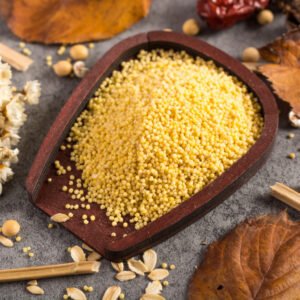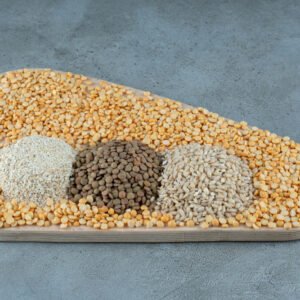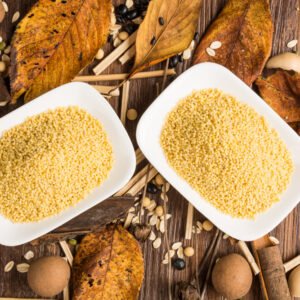Feeding your feathered companion the right diet can make all the difference in their health, energy levels, and lifespan. Pet bird owners face countless choices when shopping for bird feed, from traditional seed mixes to modern pellet formulations. Understanding what constitutes the best bird feed helps you make informed decisions that support your bird’s wellbeing.
This guide explores the top feeding options available today, breaking down nutritional requirements, comparing different feed types, and offering practical advice for creating a balanced diet your bird will love.
Understanding Pet Bird Nutritional Needs
Birds require six categories of nutrients to thrive: water, proteins, carbohydrates, lipids, minerals, and vitamins. Each plays a distinct role in maintaining feather quality, bone strength, immune function, and overall vitality.
Water remains the most critical nutrient. Birds need fresh, clean water daily for digestion, temperature regulation, and metabolic processes. Dehydration can quickly become life-threatening for small birds.
Protein supports feather growth, tissue repair, and egg production in breeding birds. The protein requirement varies by species, with larger parrots needing different amounts than finches or canaries.
Minerals like calcium and phosphorus work together to maintain bone health. The ideal calcium-to-phosphorus ratio sits at approximately 2:1. When this balance tips too far in either direction, birds can develop metabolic bone disease or other health problems.
Also Read:- 10 reasons yellow millet is the best feed for your pet birds
Pellets: The Foundation of Best Bird Feed
Pellet-based diets have transformed avian nutrition over the past few decades. These manufactured feeds combine grains, vegetables, fruits, vitamins, and minerals into uniform pieces that deliver complete nutrition in every bite.
Pellets provide complete daily nutrition in manageable portions, and when birds eat the recommended portion size for their species, they receive all necessary nutrients. This eliminates the selective eating problem common with seed-only diets, where birds pick out their favorites and leave nutritious options behind.
Quality pellets contain balanced ratios of all six nutrient categories. Manufacturers must list crude fat, protein, fiber, and moisture on labels, while quality feeds also include appropriate vitamins and minerals.
Organic options have gained popularity among health-conscious bird owners. These pellets avoid synthetic pesticides, genetically modified ingredients, and artificial additives that some owners prefer to exclude from their birds’ diets.
Converting birds from seed-based diets to pellets requires patience. Birds naturally resist dietary changes, so gradual transitions work best. Start by mixing small amounts of pellets with familiar seeds, then slowly increase the pellet ratio over several weeks.
Seeds: A Natural Component of Bird Feed
Seeds represent what many birds would eat in their natural habitats. Wild parrots, finches, and other species spend hours each day foraging for various seeds, nuts, and plant materials.
The challenge with seeds comes from nutritional imbalance rather than seeds themselves being harmful. Seeds often contain unbalanced calcium-to-phosphorus ratios, with lower calcium amounts and higher phosphorus levels. An all-seed diet almost guarantees malnutrition over time.
Seeds should make up only about 10% of most pet birds’ diets. This small proportion allows birds to enjoy natural foraging behaviors and taste preferences without compromising their health.
Different seeds offer varying nutritional profiles. Sunflower seeds provide healthy fats but can be too rich as a primary food. Millet offers lower fat content and works well as a treat or training reward. Hemp seeds, flax seeds, and quinoa bring additional variety and nutrients to the mix.
Sprouted seeds increase nutritional value by activating enzymes and boosting vitamin content. Many bird owners sprout seeds at home, providing fresh, living food that birds find irresistible.
Fresh Foods: Vegetables and Fruits in Bird Diets
Fresh produce should comprise 20-30% of your bird’s daily intake. A selection of various fruits and vegetables fed daily provides carbohydrates, vitamins, and minerals.
Dark leafy greens like kale, collard greens, and dandelion leaves offer calcium, vitamin A, and fiber. Carrots, sweet potatoes, and squash provide beta-carotene for eye health and immune function. Bell peppers deliver vitamin C without the acidity of citrus fruits that some birds find irritating.
Fruits should be offered more sparingly than vegetables due to natural sugar content. Berries, apples, pears, and melons make excellent occasional treats. Always remove seeds from apples and pears, as they contain trace amounts of cyanide compounds.
Washing all produce thoroughly removes pesticide residues. Organic produce eliminates this concern entirely, though it typically costs more than conventional options.
Chop vegetables and fruits into appropriate sizes for your bird species. Large parrots can handle bigger chunks, while smaller birds need finely diced pieces they can manage safely.
Creating a Balanced Best Bird Feed Plan
A balanced diet should consist of approximately 60-70% pellets, 20-30% fresh food, and only about 10% seeds. This ratio provides complete nutrition while accommodating natural foraging behaviors.
Here is why this balance matters. Pellets deliver consistent baseline nutrition. Fresh foods add variety, enrichment, and supplementary nutrients. Seeds satisfy instinctual feeding patterns without overwhelming the diet with fat.
Feed your bird twice daily at consistent times. Birds thrive on routine, and regular feeding schedules help maintain healthy eating habits. Remove uneaten fresh foods after a few hours to prevent spoilage and bacterial growth.
Monitor your bird’s weight and body condition regularly. Obesity has become common in captive birds, particularly those eating too many seeds or treats. Conversely, sudden weight loss may indicate illness or dietary problems requiring veterinary attention.
Consider your specific bird species when planning meals. Budgies have different requirements than cockatoos. Finches need different nutrition than Amazon parrots. Research your bird’s wild diet for insights into their natural preferences and needs.
Special Dietary Considerations for Different Species
Small birds like finches, canaries, and budgies need appropriately sized pellets and seeds. Their tiny beaks cannot crack large nuts or handle oversized food pieces.
Cockatiels and other small parrots do well on diets consisting of 75-80% pellets and 20-25% fruits, vegetables, and seeds. These medium-sized birds balance between the needs of tiny finches and large macaws.
Large parrots including African Greys, Amazons, and macaws benefit from more diverse diets with larger food pieces. They enjoy manipulating food with their feet and beaks, so whole vegetables and fruits provide mental stimulation along with nutrition.
Breeding birds require additional calcium and protein to support egg production. Cuttlebone, mineral blocks, or calcium supplements help prevent egg binding and support chick development.
Senior birds may need adjusted diets addressing age-related health issues. Some older birds develop kidney problems requiring lower protein intake, while others need softer foods if beak problems develop.
Supplements and Treats for Complete Nutrition
Even the best bird feed plan may benefit from targeted supplementation. Birds eating all-seed diets definitely require vitamin and mineral supplements, though pellet-fed birds typically need less supplementation.
Calcium supplements come in several forms. Cuttlebone provides calcium plus a beak-conditioning activity. Mineral blocks offer calcium along with other trace minerals. Calcium powders can be sprinkled on fresh foods for birds who ignore cuttlebone.
Protein supplements become necessary during molting, breeding, or recovery from illness. Cooked eggs, cooked egg substitute, bean mixtures, tofu, whole grain breads, and low-fat cheese provide protein for birds on seed diets. Small amounts work best since too much protein can strain kidneys.
Omega-3 fatty acids support brain function, feather quality, and immune response. Birds receiving diverse pellet diets and seeds like flax usually get adequate omega-3s, but fish oil supplements exist for birds needing extra support.
Treats should never exceed 10% of daily caloric intake. Healthy treat options include small pieces of whole grain pasta, air-popped popcorn, or specially formulated bird treats. Avoid chocolate, avocado, salt, sugar, and caffeine, which are toxic to birds.
Reading Bird Feed Labels and Choosing Quality Products
Learning to interpret pet food labels helps you select the best bird feed for your companion. Ingredient lists appear in descending order by weight, so the first few ingredients matter most.
Quality pellets list whole grains, vegetables, and fruits among top ingredients. Avoid products where sugar, artificial colors, or generic “grain products” dominate the ingredient list.
Check guaranteed analysis sections for appropriate protein, fat, and fiber levels. Most companion birds need 12-18% protein, 3-6% fat, and 4-6% fiber, though requirements vary by species and life stage.
Look for manufacturing dates and storage recommendations. Fresh food contains more nutrients than products sitting on shelves for months. Store bird feed in cool, dry locations in sealed containers to prevent spoilage and pest contamination.
Certifications like USDA Organic, Non-GMO Project Verified, or third-party testing seals indicate manufacturers meet specific quality standards. While certified products cost more, many owners find the peace of mind worthwhile.
Common Feeding Mistakes to Avoid
Many well-meaning bird owners make feeding errors that compromise their pets’ health. All-seed diets top the list of dangerous practices. Seeds lack sufficient vitamins, minerals, and other nutrients birds need long-term.
Overfeeding treats creates obesity and nutritional imbalances. Birds are master manipulators who quickly learn to beg for favorite foods. Stay firm with portion control even when your bird insists they’re starving.
Feeding from your plate exposes birds to excessive salt, sugar, fats, and potentially toxic ingredients. While sharing meals strengthens bonds, stick to bird-safe foods offered separately from seasoned human dishes.
Inconsistent feeding schedules disrupt natural rhythms and can lead to overeating or food guarding behaviors. Set regular mealtimes and stick to them as closely as possible.
Neglecting water changes allows bacteria to multiply in water dishes. Scrub and refill water containers at least daily, more often in hot weather or if birds drop food into water.
Where Quality Matters: Sourcing Your Bird Feed
Finding reliable sources for bird feed ensures you receive fresh, properly stored products. Pet specialty stores typically offer better selection and expertise than general retailers, though prices may run higher.
Online retailers provide convenience and often competitive pricing, but shipping times and costs vary. Buy from established companies with good reputations to avoid counterfeit or expired products.
Some bird owners purchase ingredients separately and create custom blends. This approach allows complete control over quality and freshness but requires knowledge of avian nutrition to ensure proper balance.
Local bird clubs and avian veterinarians often recommend trusted suppliers. CMS Industries and similar agricultural companies manufacture various animal feed products, though checking their specific offerings helps match products to your bird’s needs. When purchasing any feed, whether from specialized retailers or agricultural suppliers like CMS Industries, verify the product specifications align with your bird species’ requirements.
Buying in bulk saves money but only makes sense if you can use the food before it spoils. Most pellets stay fresh for 6-12 months when stored properly, while seeds begin losing nutrients after a few months.
Transitioning to Better Bird Feed
Changing your bird’s diet takes time and patience. Birds instinctively resist unfamiliar foods as a survival mechanism, so expect initial rejection of new items.
Start transitions slowly by mixing 10% new food with 90% familiar food. Every few days, increase the new food percentage while decreasing the old food. Complete transitions typically take 2-4 weeks, sometimes longer for stubborn birds.
Place new foods in familiar dishes next to favorite treats. Birds may investigate novel items if they appear alongside trusted foods. Some owners find success by eating new foods in front of their birds, since many species are social eaters.
Never starve your bird into accepting new foods. This dangerous practice can cause life-threatening weight loss within days. If your bird absolutely refuses new foods after reasonable attempts, consult an avian veterinarian for guidance.
Monitoring Your Bird’s Health Through Diet
Diet directly impacts every aspect of bird health. Bright, smooth feathers indicate good nutrition, while dull, brittle, or stress-barred feathers suggest dietary deficiencies.
Droppings provide valuable health information. Normal droppings contain solid feces, white urates, and clear liquid. Changes in color, consistency, or frequency may indicate dietary problems or illness.
Energy levels reflect diet quality. Well-nourished birds stay active, vocal, and engaged with their environment. Lethargy, reluctance to play, or reduced vocalization warrant veterinary attention.
Regular weigh-ins catch problems early. Purchase a gram scale designed for small animals and weigh your bird weekly. A 10% weight change in either direction requires veterinary evaluation.
Annual avian vet checkups should include nutritional assessment. Bring a list of foods and supplements your bird receives so your veterinarian can identify potential gaps or excesses.
Final Thoughts on Choosing the Best Bird Feed
Selecting the best bird feed means balancing complete nutrition with variety, palatability, and your bird’s individual preferences. Pellet-based diets supplemented with fresh foods and limited seeds provide the foundation most pet birds need to thrive.
Quality matters more than price when it comes to your bird’s food. Cheap feeds often contain fillers, artificial ingredients, and imbalanced nutrients that save money now but cost more in veterinary bills later.
Every bird is unique, so expect some trial and error finding the perfect diet. What works wonderfully for one African Grey might not suit another, even within the same species. Pay attention to your bird’s responses and adjust accordingly.
Let’s break it down: feed primarily high-quality pellets, offer fresh vegetables and fruits daily, include seeds sparingly, provide clean water constantly, and supplement as needed based on your bird’s life stage and health status.
If you need guidance on agricultural products or animal nutrition, CMS Industries offers expertise in feed manufacturing and agricultural solutions. Whether you’re caring for a single pet bird or managing larger animal nutrition needs, understanding feed quality and nutritional balance remains essential across all species.
Frequently Asked Questions
Q.What percentage of my bird’s diet should be pellets versus seeds?
Pellets should make up 60-70% of your bird’s daily food intake, with seeds comprising only about 10%. The remaining 20-30% should consist of fresh vegetables and fruits. This ratio ensures complete nutrition while allowing natural foraging behaviors. Seeds alone cannot provide balanced nutrition, leading to deficiencies when fed as primary food sources.
Q.Can I feed my bird only seeds if I add vitamin supplements?
Supplements cannot fully compensate for the nutritional imbalances in all-seed diets. Seeds lack proper calcium-to-phosphorus ratios and contain excessive fat for most species’ needs. While supplements help, they work best alongside pellet-based diets rather than as bandages for poor baseline nutrition. Transitioning to pellets remains the healthiest long-term choice.
Q.How do I know if my bird food has gone bad?
Fresh bird feed smells mild and grain-like, while spoiled food develops musty, sour, or rancid odors. Check for visible mold, clumping, or insect activity. Pellets typically last 6-12 months in sealed containers, while seeds begin losing nutrients after several months. Always check expiration dates and store food in cool, dry locations.
Q.Are organic bird foods worth the extra cost?
Organic feeds eliminate exposure to synthetic pesticides, GMO ingredients, and artificial additives, which many owners prefer for their birds. While conventional feeds meeting quality standards also work well, organic options provide peace of mind regarding ingredient sourcing. The decision depends on your priorities and budget, as both can support healthy birds.
Q.What fresh foods are toxic to pet birds?
Never feed birds avocado, chocolate, caffeine, alcohol, salt, or foods containing these ingredients. Apple and pear seeds contain trace cyanide and should be removed. Onions, garlic, and mushrooms can cause health problems in large amounts. Stick to bird-safe vegetables, fruits, and specially formulated treats to keep your companion healthy.




